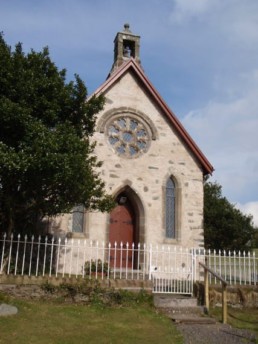
Photo credit: Historic Environment Scotland
Historic Environment Scotland (HES) is the lead public body concerned with protecting, understanding and sharing Scotland’s historic environment, for today and for the future. HES looks after 350 historic sites in Scotland from all periods in history; these range from castles to cairns, brochs to bothies, ironworks and much in between. They have a formal role in the planning system, with the protection of buildings of architectural or historic importance.
Ensuring the development of traditional skills is essential to look after Scotland’s historic and traditionally built heritage, HES is engaged with a training programme for apprentices in various trades such as stonemasonry, joinery and slating. The focus of HES is not just on well-known historic structures, but on the wide range of traditional buildings that makes up 20% of Scotland’s housing stock.
HES also gives advice on repair to homeowners and organisations on appropriate repairs to buildings of all types and research and publish best-practice guidance. The changing climate is obliging Scotland to review many aspects of its operations and work is ongoing to reduce energy consumption, adopt climate change risk assessments, develop energy efficiency improvements for buildings, progress resource minimisation and sustainable procurement.
Kilmelford Church, Scotland
Kilmelford Church is a rural church on the west coast of Scotland. Previous renovation works had addressed fabric defects and dampness, but low temperatures and a very old heating system made this building hard and expensive to heat. Several new ideas for the increased community use of the church caused a re-think on the heating methodology. HES advised and supported a new way of heating this listed building.
A combination of air source heat pump (ASHP) and radiant heating panel were installed in the church. The strategy behind this was that low-level heat is provided to the building fabric by the ASHP, giving an ambient temperature of around 16 degrees Celsius. While good for the building fabric, keeping it dry is not a high enough heating standard for people. So, when the building is in use, additional heating is being delivered when the building is in use by electric infra-red heating panels on the pews and above circulation areas.
Principal Characteristics of the Renovation Works:
| Ownership type: | Private |
| Year of construction: | Circa 1920 |
| Energy performance: | Comparison with pre- and post-upgrade consumption of electricity has shown that there has been a 35% reduction, even though the church is now used much more than before. Kilmelford now uses 25% less energy than similar buildings in Scotland. |
| Cost of works: | € 31,91 |
Historic Environment Repair Grant information from Historic Environment Scotland website: https://www.historicenvironment.scot/grants-and-funding/our-grants/historic-environment-repair-grant/
